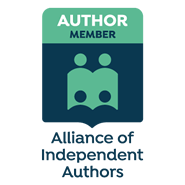I am a writer. It started when I discovered books, paper, pencils and school. The word writer is friendly and easy, not pompous and full of expectations like author or blogger.
am a writer. It started when I discovered books, paper, pencils and school. The word writer is friendly and easy, not pompous and full of expectations like author or blogger.
I believe everyone is a writer because we spend our days telling stories to ourselves (although many of them are not true) about ourselves and the world around us. Sadly, many of us never write our stories down where others can be informed, inspired, and empowered by them.
I believe so much in the power of writing that I now encourage others to write and even publish their work, not to necessarily become best sellers, but to become “tellers” before they die.
Having said all that, I confess that my inner critic, Susie, still tries to discourage my writing. When she shows up I send her to the corner.
Which is why we need like-minded encouragers, supporters and sounding boards. That has been the great gift of social media. Where else and when else in history can you share your thoughts and ideas or post your inquiries with people from the around the world 24/7? For all our complaining about the pervasiveness of social media, it is a miraculous opportunity. And when combined with local networks and events, we arm ourselves with the resources and tools we need for success.
Five things to do to become a (better) writer.
1. Create a community.
You can do this on LinkedIn, Meetup or Facebook. On all these sites, decide your goal for joining the group. Then find groups that have active and robust memberships. Once you join, participate by offering valuable information, not making a pitch for your products.
2. Join a tribe.
I joined Triberr.com and GutsieIndiePublishers online, and a Southern California group called Publishers and Writers of San Diego. Not only have I met many fine writers, editors and publishers, but have discovered many new resources and techniques as well.
Perhaps you will benefit from a tribe that writes in your genre, such as the National Association of Memoir Writers, where you can have access to loads of resources, as well as learn from active memoir writers who share their experiences and tips on the member teleconferences.
3. Participate in a challenge.
I’ve been in blogging challenges and article challenges. I’ve participated in a writing challenge created by Jeff Goins and a blog challenge by Michelle Shaeffer, to name a few. Though most writing challenges offer prizes, that is not the point. My motivation is to sharpen my skills and get to know other writers. Some of the writers I’ve met in these challenges have become friends, colleagues and even joint venture partners.
4. Read.
Reading broadens you, gives you another perspective and sparks new ideas.
In his article, “Stephen King’s 20 Tips for Becoming a Frighteningly Good Writer,” Jon Morrow captures King’s key wisdom and then adds commentary of his own regarding becoming a successful blogger.
Stephen King said
“If you want to be a writer, you must do two things above all others: read a lot and write a lot.”
Jon said
Of course, most bloggers do neither. We start a blog, squeeze in the occasional post between going to the gym and picking up take-out, and then expect it to somehow lead to fame and fortune.
Sorry, but that’s not how it works. Every popular blogger I know reads at least one book every week and writes at least 1,000 words every day.
Yes, it’s a lot, but success comes at a price, folks. Are you willing to pay it?
5. Respect the revision process.
I urge you to hire or convince someone else to edit your work before you publish it. Then use their notes to make revisions. That’s why I urge my clients to get their first drafts done as fast as possible so they can get to the real work of writing: revision.
Revision is not optional. It is actually the most important part of the writing process. It’s when you shape, tone up and hone your thoughts.
“I’m not a very good writer, but I’m an excellent rewriter.”James Michener
You may have submitted your first and only drafts in high school English, and maybe even in college. But publishing your article and book for the public is a different story. They won’t be as forgiving as Miss Lewis (my 10th grade English teacher–Wait! she wasn’t that forgiving either.)
Your job as a writer is to make your ideas flow smoothly to eliminate (or at least minimize) jerks and jumps in the story you tell.
And for those of you who insist on doing your own proofreading, (gasp!) at least heed this advice.
“If you’re going to proofread your own work, do it from back to front,” says Neal Wooten
Some of the advice I’ve shared is best suited for people who want to make a living from writing or blogging. That may not be you.
Perhaps you want to be an occasional writer for whom just getting your work into print is the reward. Or maybe you want to use your writing to springboard your speaking career or leave a legacy for your grandkids or make just enough euros to pay for your lattes when you travel.
Whatever your goal, by doing these five things you will not only be a writer, but a better one for sure.
Does the idea of writing appeal to you, but you need help with getting started or back in gear? An easy way to get into the swing is to get my 4-week e-course, “Rockin’ My Book.” Once enrolled you will receive a lesson in your email each week with loads of content and suggested activitives. Get the e-course details here. You’ll get a gentle push, but no pressure. Email me with your questions throughout the course. Get the e-course now.













